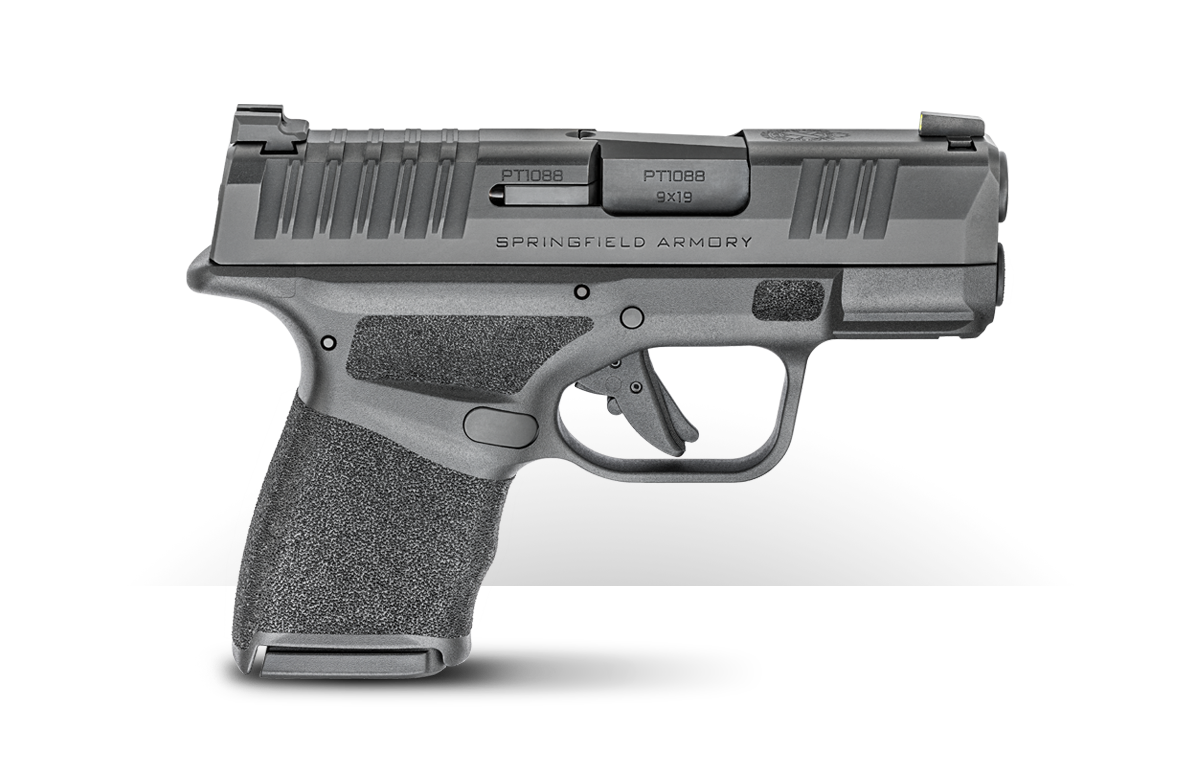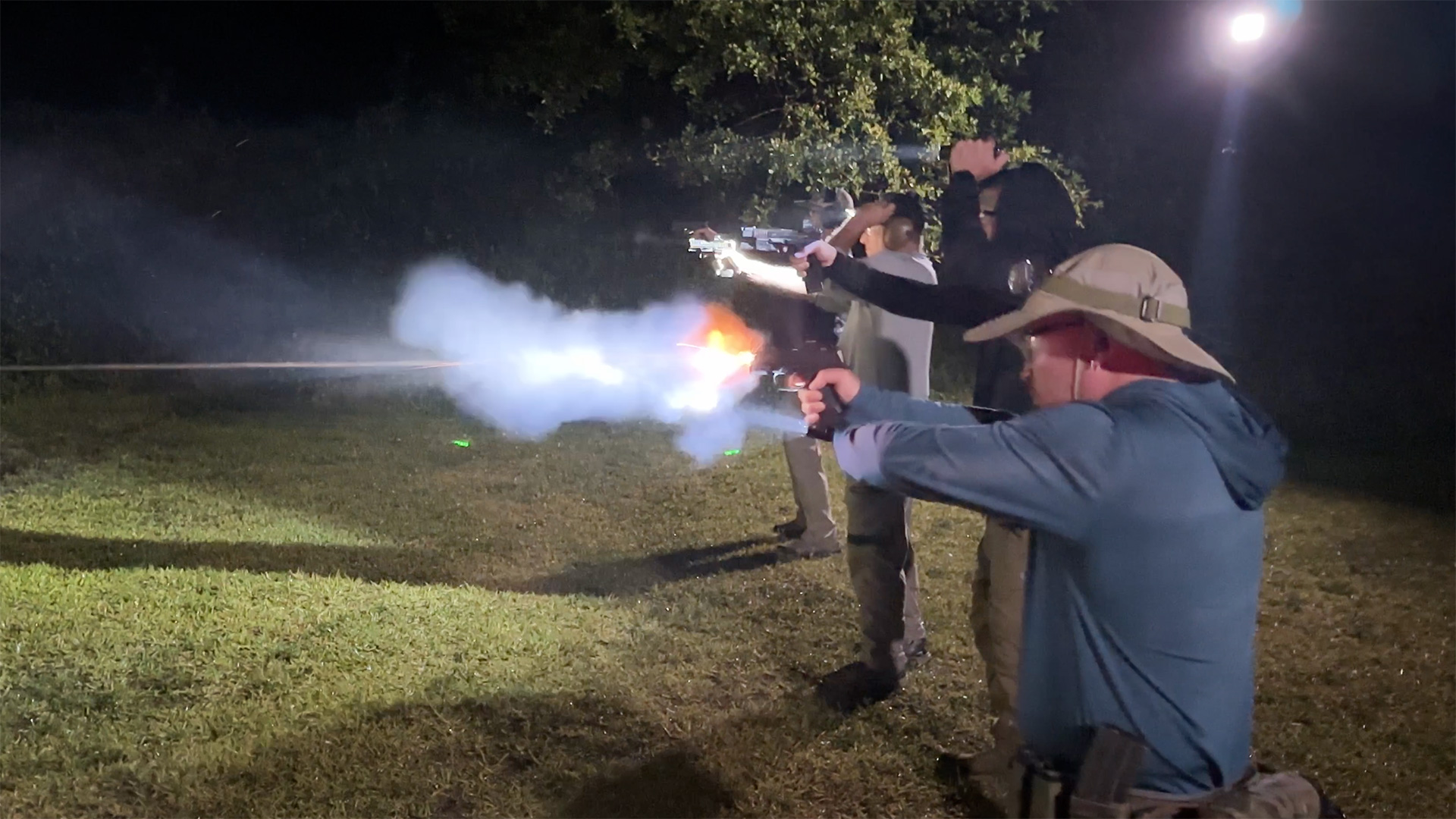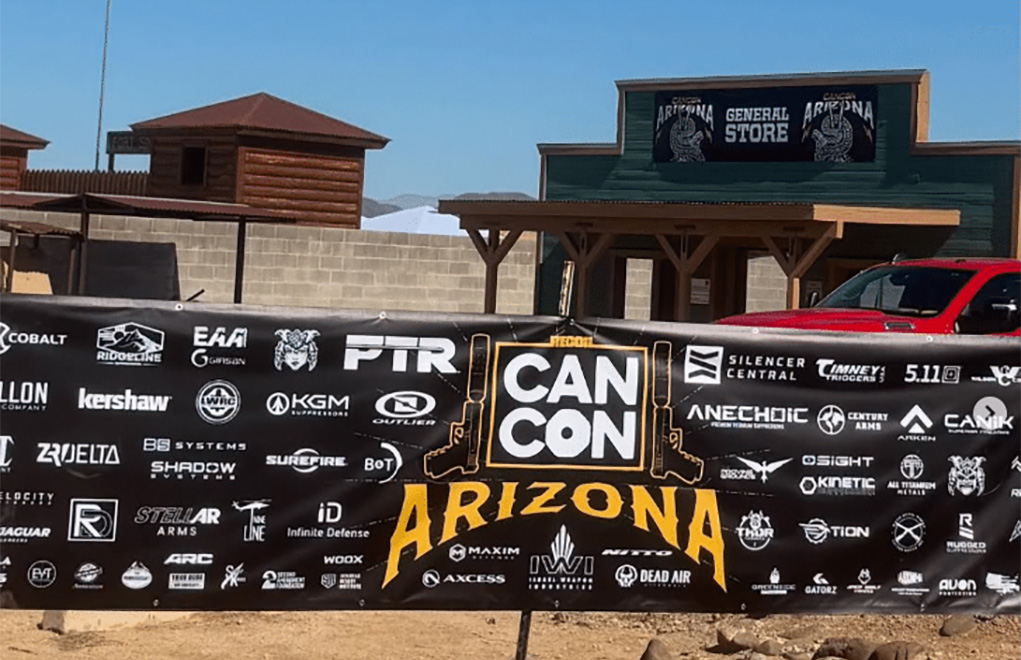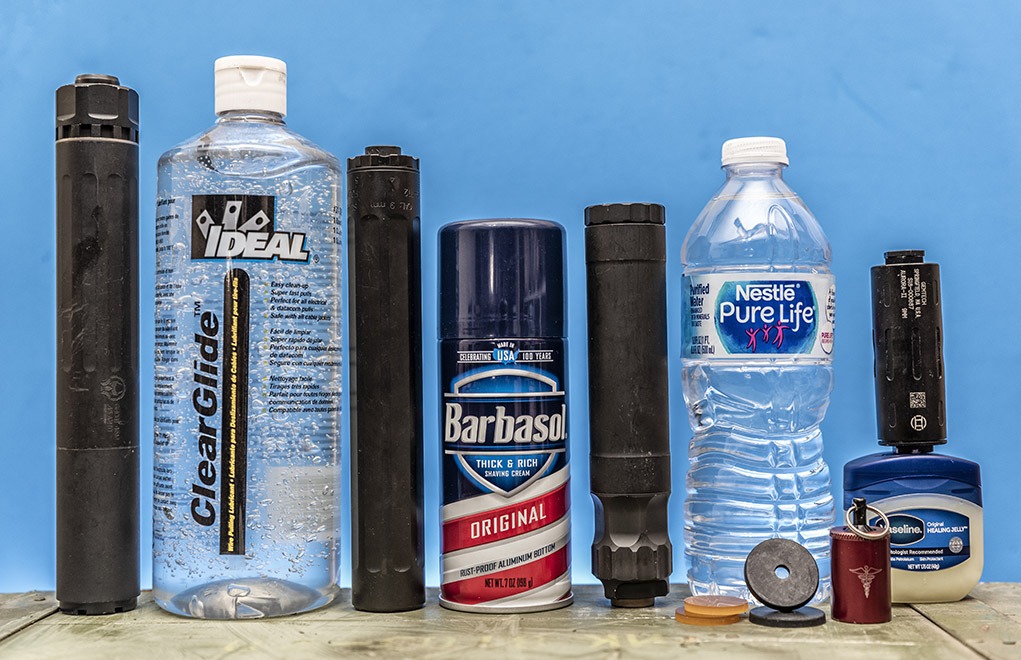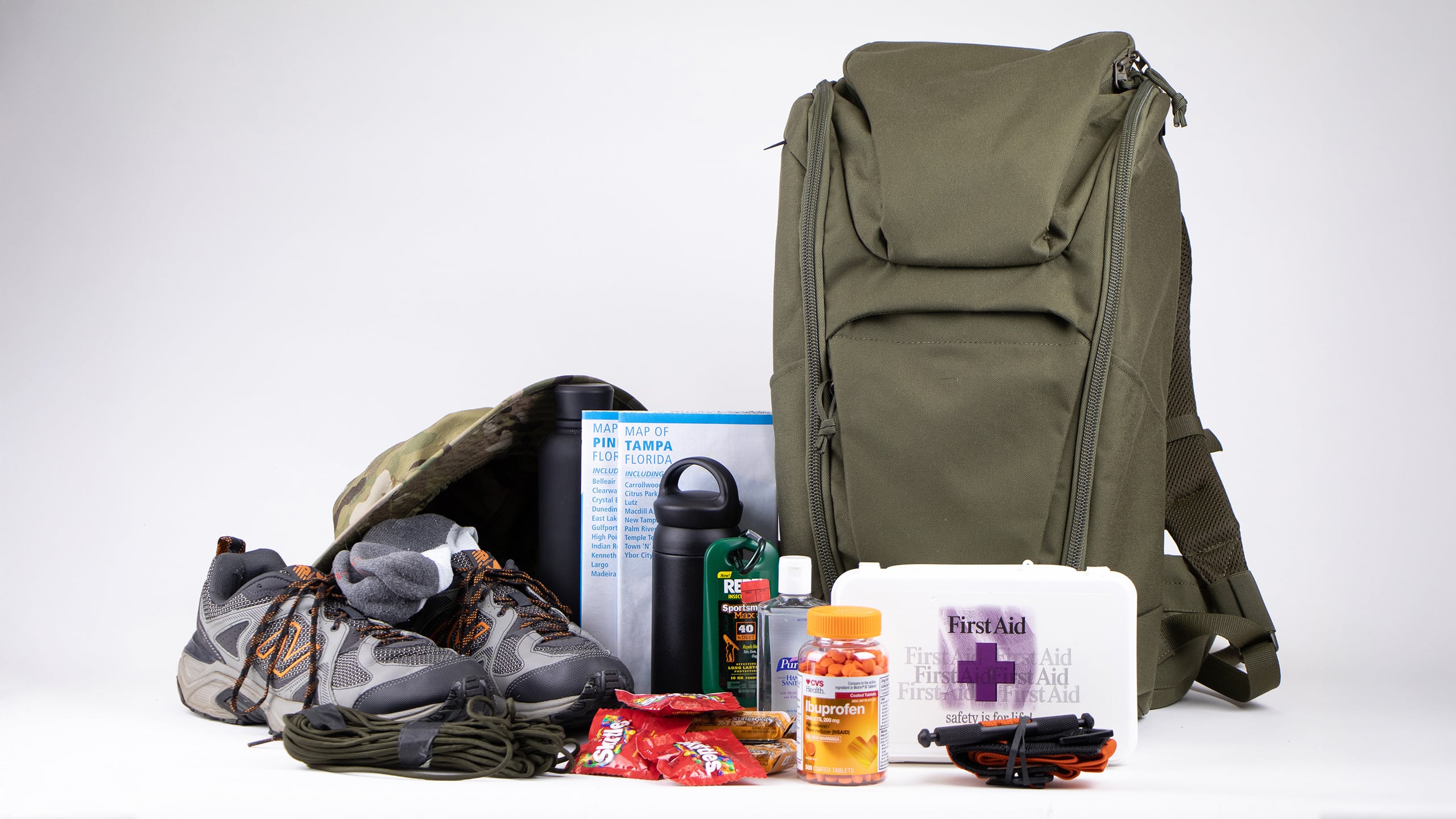Lethal Dangers in Extreme Close Quarters Defense
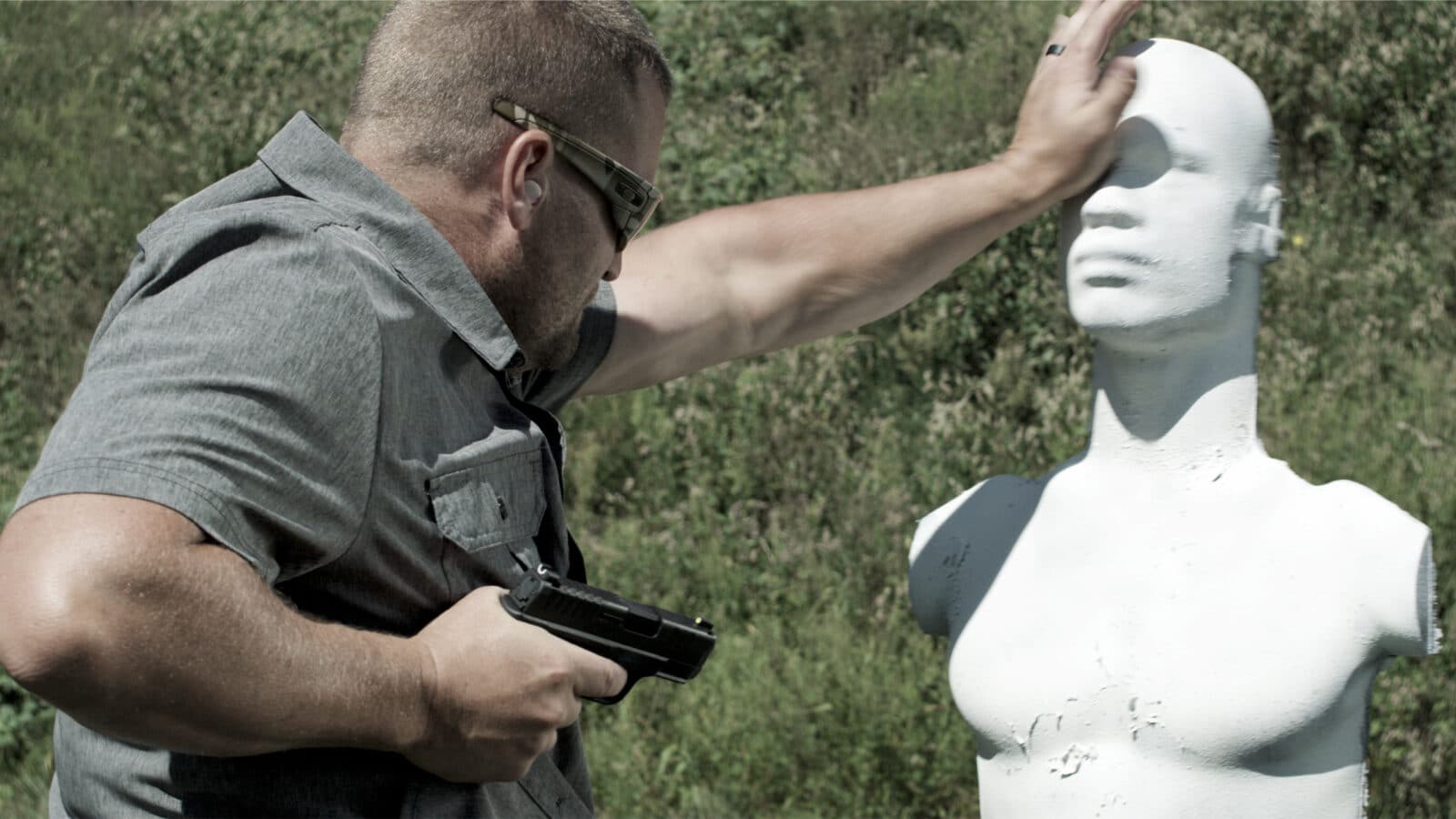
In today’s article, veteran police trainer Mike Boyle offers suggestions on defending against a close-quarters assault. This article is for informational purposes and is not intended to replace in-person instruction with a qualified instructor. We always encourage practicing in a distraction-free location with firearms that have been rendered safe.
Outside of military conflict, it is an indisputable fact that most violent encounters unfold inside of conversational distance. This is true of fights with the schoolyard bully back in the 6th grade, an attempted mugging on the street, or gun play in an unforgiving world.
When a violent adversary has invaded your personal space, there is precious little time to react. Additionally, if weapons of any type are used, your opponent’s skill or lack thereof is seldom an issue. Quite simply if you don’t do something as fast as you can and as hard as you can, you are likely to be seriously injured or even killed.
An area of deficiency I have noted with both law enforcement officers and responsible citizens who have taken up the gun for self-defense is a poor command of fighting skills in extreme close quarters.
Back when I received my initial firearms training as a law enforcement officer, the closest distance we ever trained at was 7 yards. The faulty logic at the time was that if you could shoot and hit all the way back to 50 yards, certainly you could manage a problem a mere few feet away.
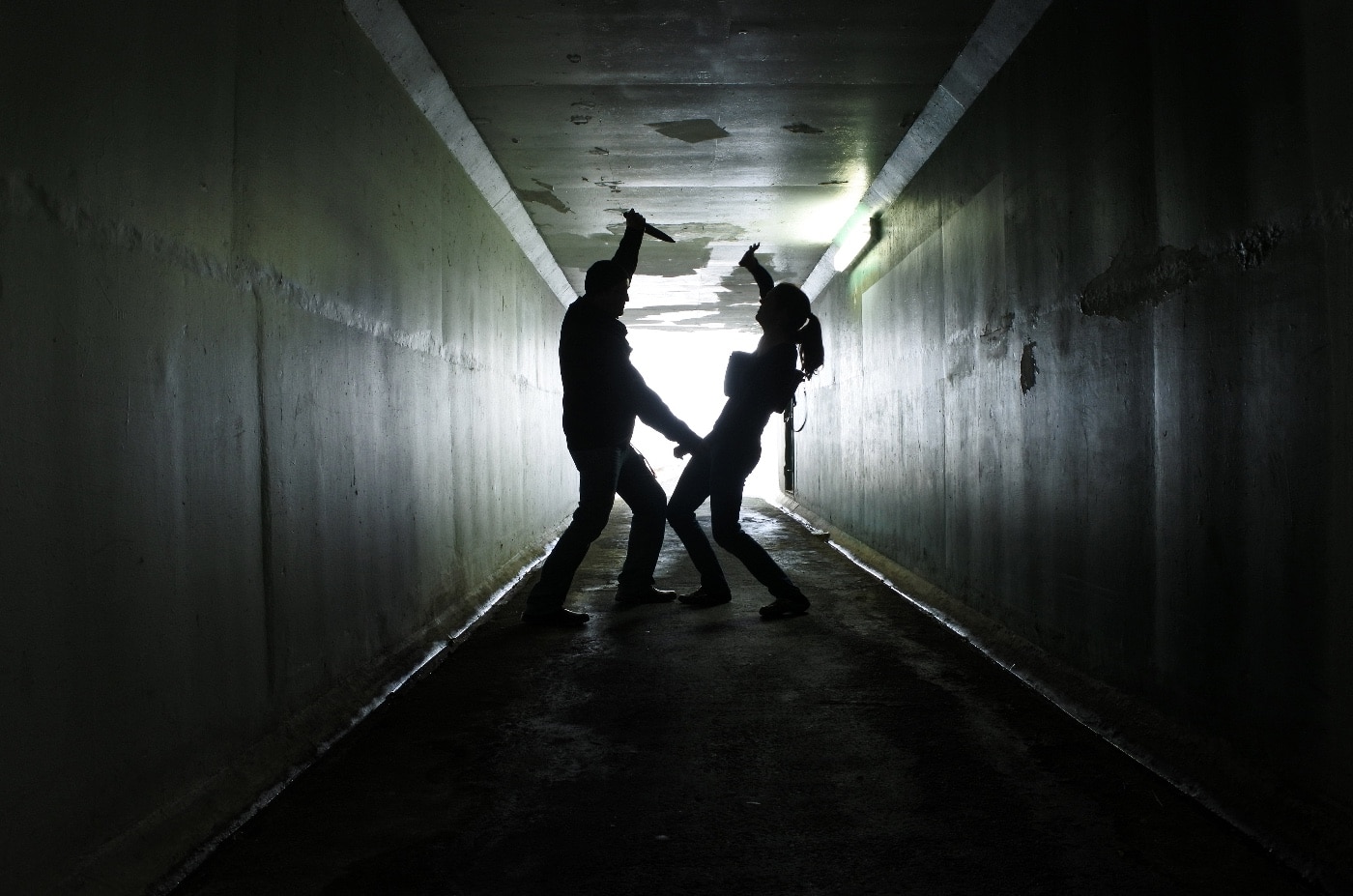
What was overlooked of course is that your adversary may try to take you by surprise, has already made up his mind on what he is going to do, and may very well be moving toward you in a very aggressive manner. Should you attempt to draw and fire, it would be highly likely your muzzle would be deflected off the target and you would be unable to score an effective hit.
As time went on, we all became aware of the realities of armed conflict and came to terms with the fact that a great deal of the time that problem is unfolding well inside of 7 yards. Even more disturbing was the fact that almost half the time the aggressor was close enough to touch. Progressive trainers recognized that for training to be relevant and effective, it must match the pattern of the anticipated encounter. Slowly, things began to improve as training doctrine began to address these concerns. Sadly, some people still haven’t gotten the message.
The Harsh Reality
While there is no central data bank as to circumstances where armed citizens are involved in lethal confrontations, we can get a pretty quick glimpse of what happens by checking out the Armed Citizen page in the NRA’s American Rifleman magazine. Month after month incidents that took place during home invasions, attempted carjackings, hold ups in convenience stores, etc. are outlined. A great many take place in less than optimal light and at very close range, and some involve physical contact. Often, this pattern repeats itself.
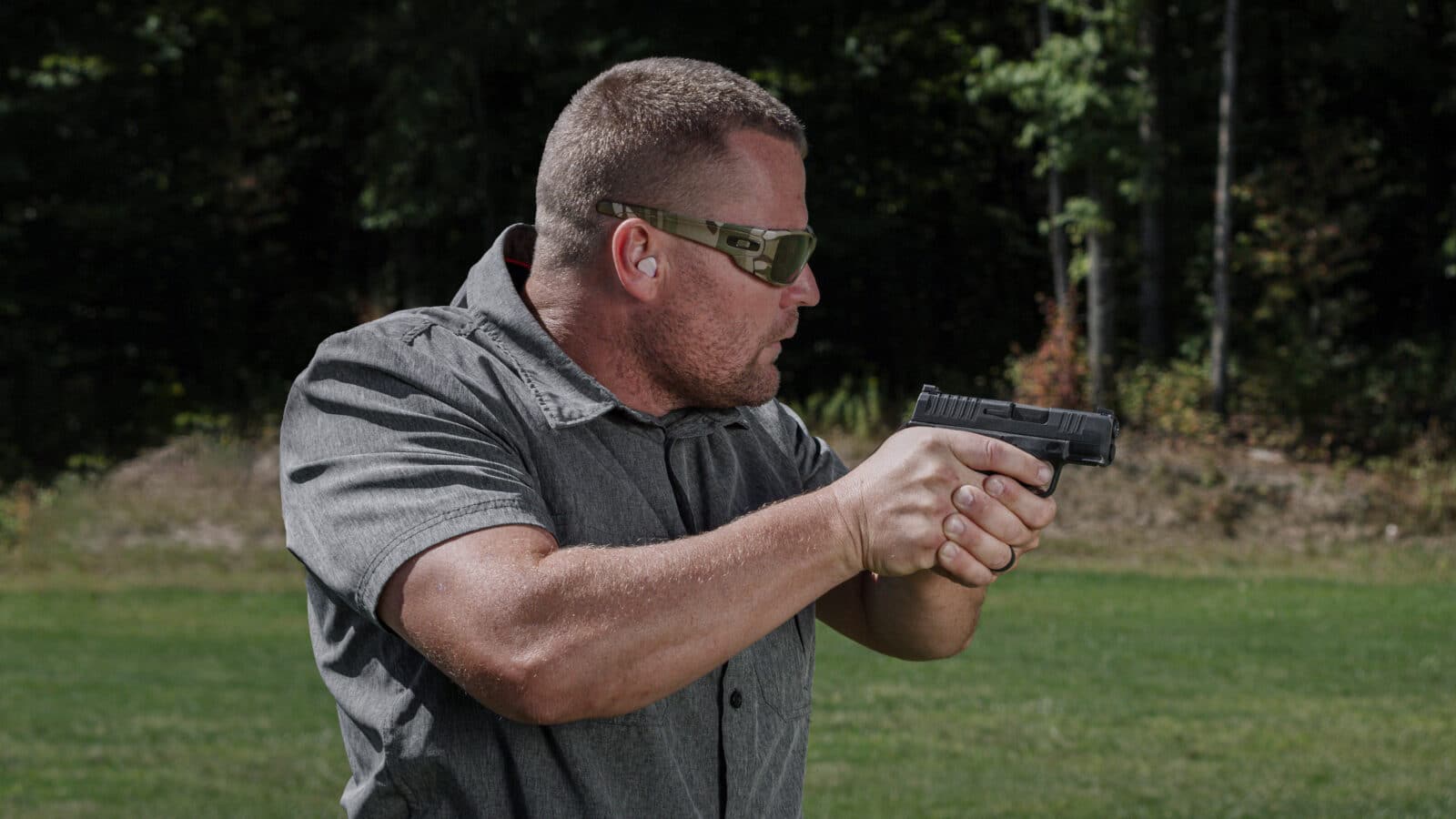
Unlike police officers who very often know they are responding to a potentially dangerous event, armed citizens may be totally taken by surprise. This is particularly true in urban environment where having people in close proximity to you is a fact of life.
When danger is but a step or two away, we all recognize that snapping into that preferred two-hand shooting stance is not going to work. Your handgun can be deflected well off target or, worse yet, it might be taken from you if you are not prepared. Depending on the type of weapon used by the aggressor, you may need to redirect his attack before you can even resort to the higher power of your holstered pistol.
Speed Rock
One remedy offered some years ago was the “speed rock,” where the shooter would draw the gun to hip level, arch the back and quickly fire a shot or two at the assailant. For any number of reasons this proved less than ideal, especially if the assailant had a contact weapon of some type like a knife or bludgeon.
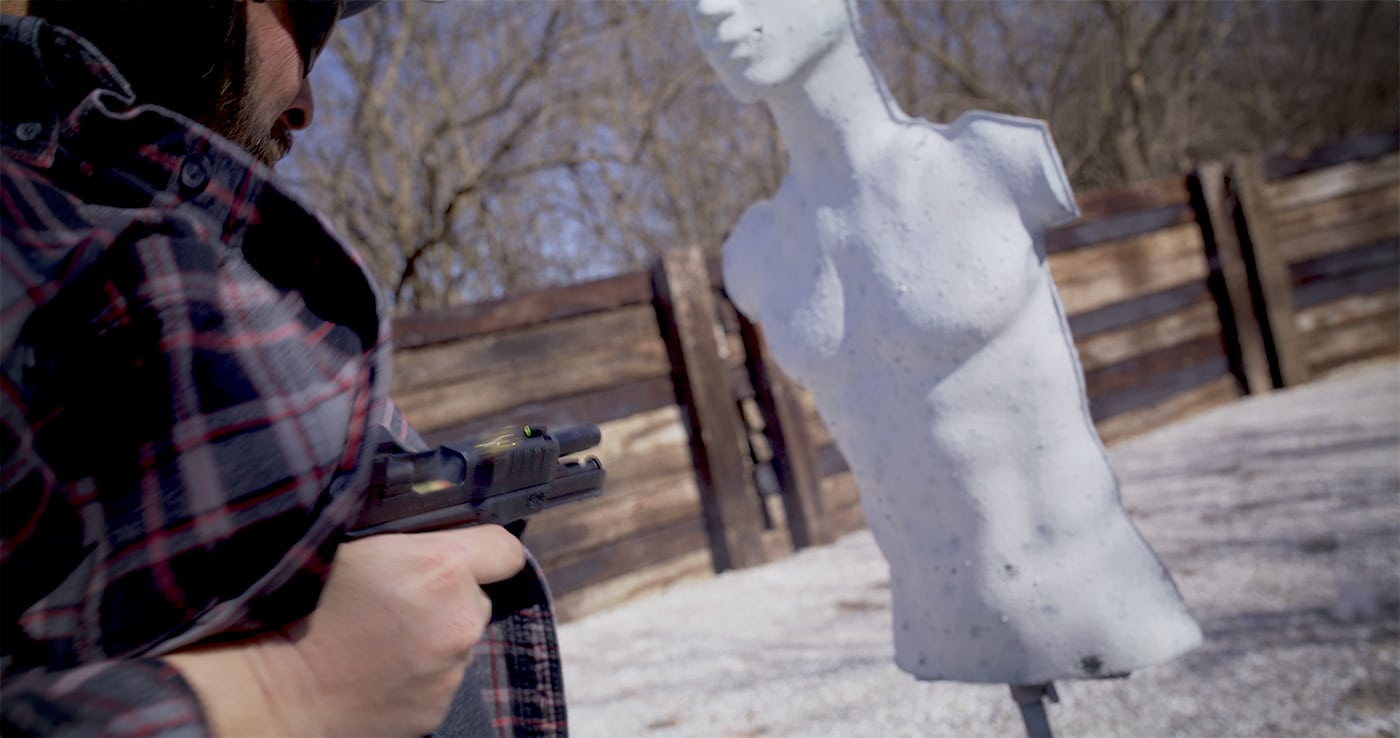
What we can end up in is a tie where you engage the assailant, but he has just plunged a knife into your neck or scrambled your brains with a baseball bat. We can do better.
A Better Mousetrap
Somewhere back in the early 1980’s, the FBI put out a training video called “Keys to Survival,” which outlined techniques that differed from the doctrine I had been exposed to before.
One that caught my attention was shooting from a retention position where the gun is drawn in and held tight alongside the body, being especially careful not to project the gun too far forward. This prevents an adversary from deflecting your gun off target or succeeding in a disarm attempt. To complete the picture, bring the support side arm up to protect the computer (head) and motor (neck & chest), and touch the back of your neck. This creates a cage to protect you from attack by a contact weapon to those critical areas.
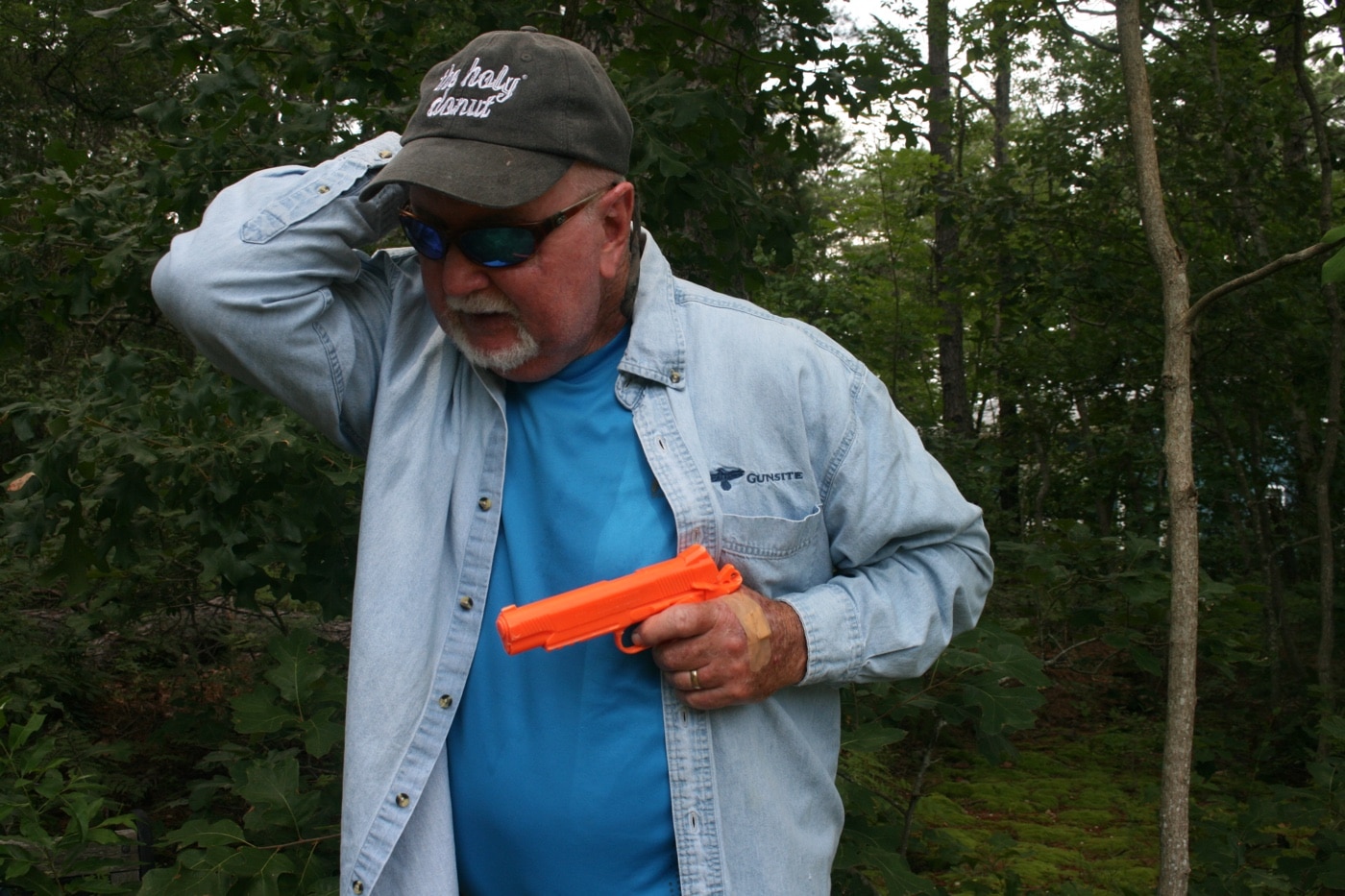
When I first got acquainted with shooting from the retention position, we were still shooting revolvers and the escaping gas between the cylinder and forcing cone often tickled your belly. No big deal, but you knew something was going on.
But with an autopistol, one must be especially careful that the reciprocating slide does not come into contact with your body or jacket. This can be problematic during winter weather where heavy coats are often worn. To avoid this problem regardless of the season, a slight cant of the drawn pistol to the outside can help ensure the slide will not contact anything and will continue to work.
Should you have to fire from the retention position, try to create distance between you and your adversary as quickly as possible. If you succeed and the threat is still viable, additional shots can be fired from eye level with even greater effect.
Aggressive Movement
A somewhat controversial technique is something called “shove and shoot” or a step-back technique. The reason I say it is controversial is simply because some people don’t understand the application.
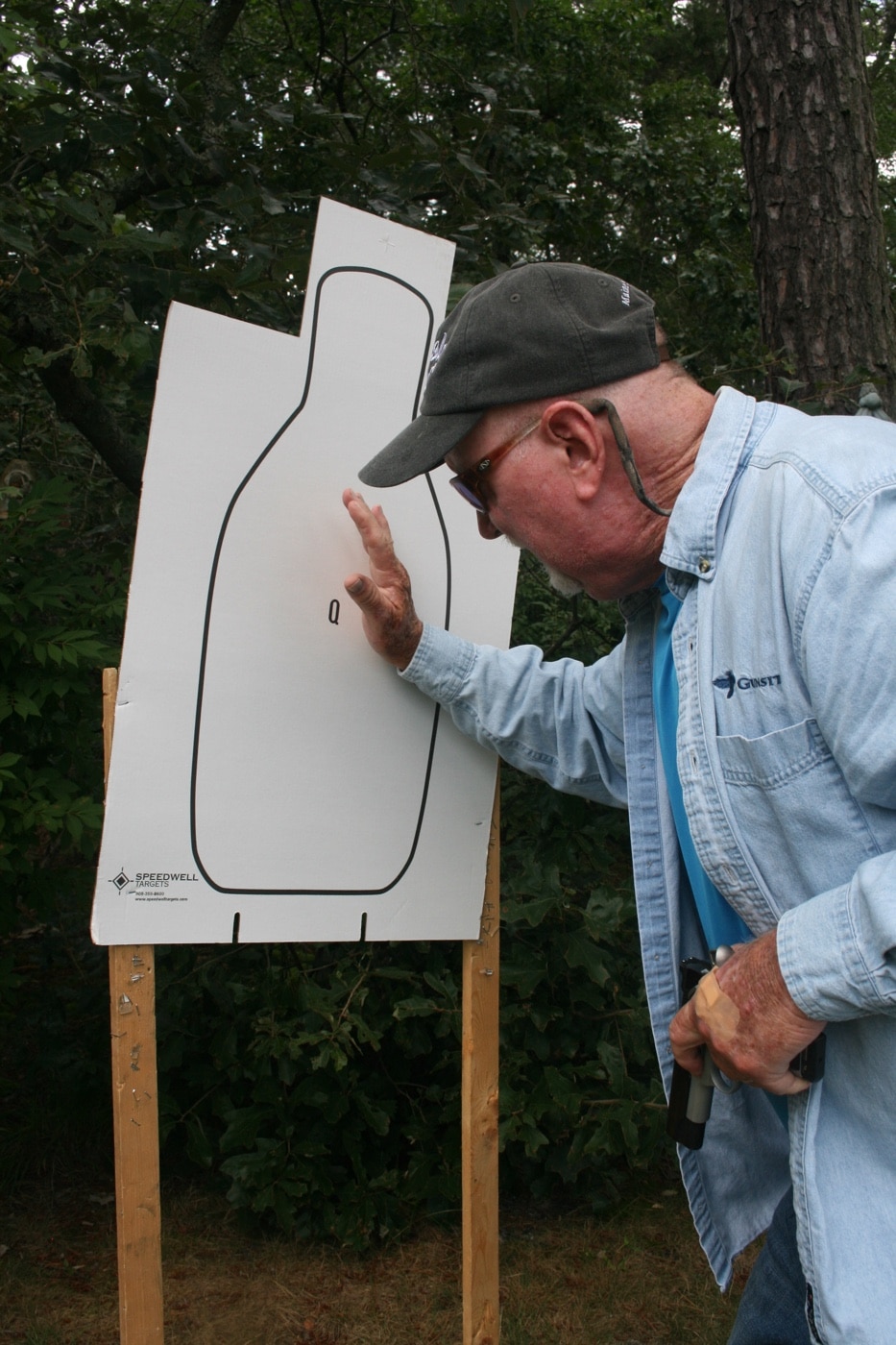
No, it wouldn’t be my choice with someone quickly moving toward me with weapon in hand, but it works like a charm against someone who has encroached inside of your personal space. It might also work against an individual at arm’s length who might be trying to draw a weapon from a pocket or the waistband.
When the aggressor steps inside your personal space, a quick blast to the solar plexus with a support-hand palm strike will very often change their focus and get them moving back in the opposite direction. Take a big step back, and if needed draw the gun to eye level and assess the situation. Hopefully, the bad guy has reconsidered his intentions. If not, you are in a better position to respond with superior force.
An alternative is driving forward. Again, this would not be the best technique against someone brandishing an edged weapon, but it can have some application. As you draw the gun, hold it tight to the body and angle the muzzle down. Put the palm of the support hand under the assailant’s chin and, if your fingers extend to the eyes, that’s better yet. Push forward aggressively, which will take your adversary off balance. If necessary, fire to stop the attack.
Contact Shots
With a semi-automatic pistol, it is possible that contact with an adversary may push the slide out of battery, which can prevent firing. This is why pistols like the Hellcat feature a “standoff” device at the muzzle to help prevent this from happening.
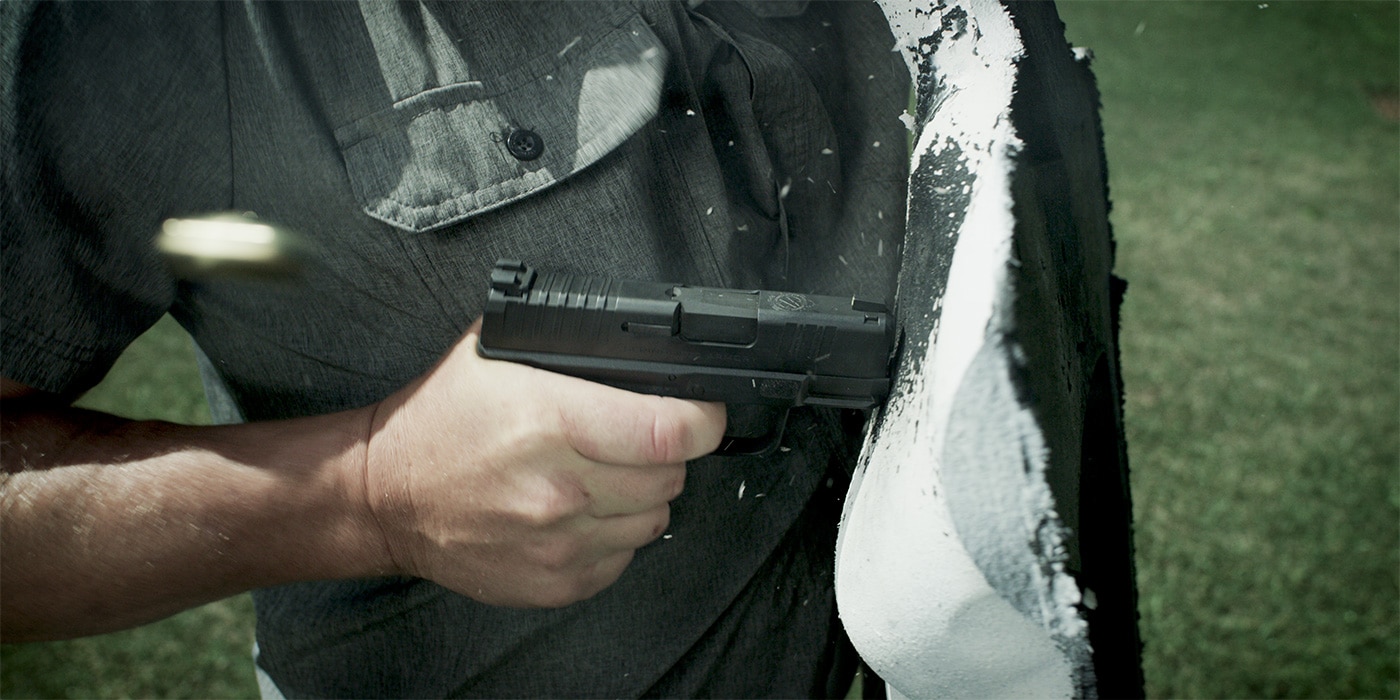
Needless to say, this happening can be terribly inconvenient when somebody is trying to crush your skull with a brick. The short answer is to pull back, allowing the slide to go forward so you can fire. But what if that is outside the realm of possibility?
Typically, the slide will only move a fraction of an inch should it come in contact with your adversary. If you can move the gun-side shoulder back a tad, this will return the gun to battery and enable you to fire a shot. However, you can experience a stoppage if your hand interferes with the function of the slide. Create distance, clear the stoppage, and fire again if necessary.
Affixing a weapon-mounted light to your pistol may eliminate the problem of the gun coming out of battery on contact shots. As long as the bezel of the light extends past the slide, you will not experience this problem and it’s business as usual.
More Than the Gun
There is no one technique that is going to work in every conceivable close quarter’s situation. What if any weapons do you see? If there are no weapons, are you justified in shooting? What does the environment look like? If I move forward or back, do I run the risk of stepping off the subway platform or in front of a truck going 60 mph? Is there a possibility that others may join in the fight?
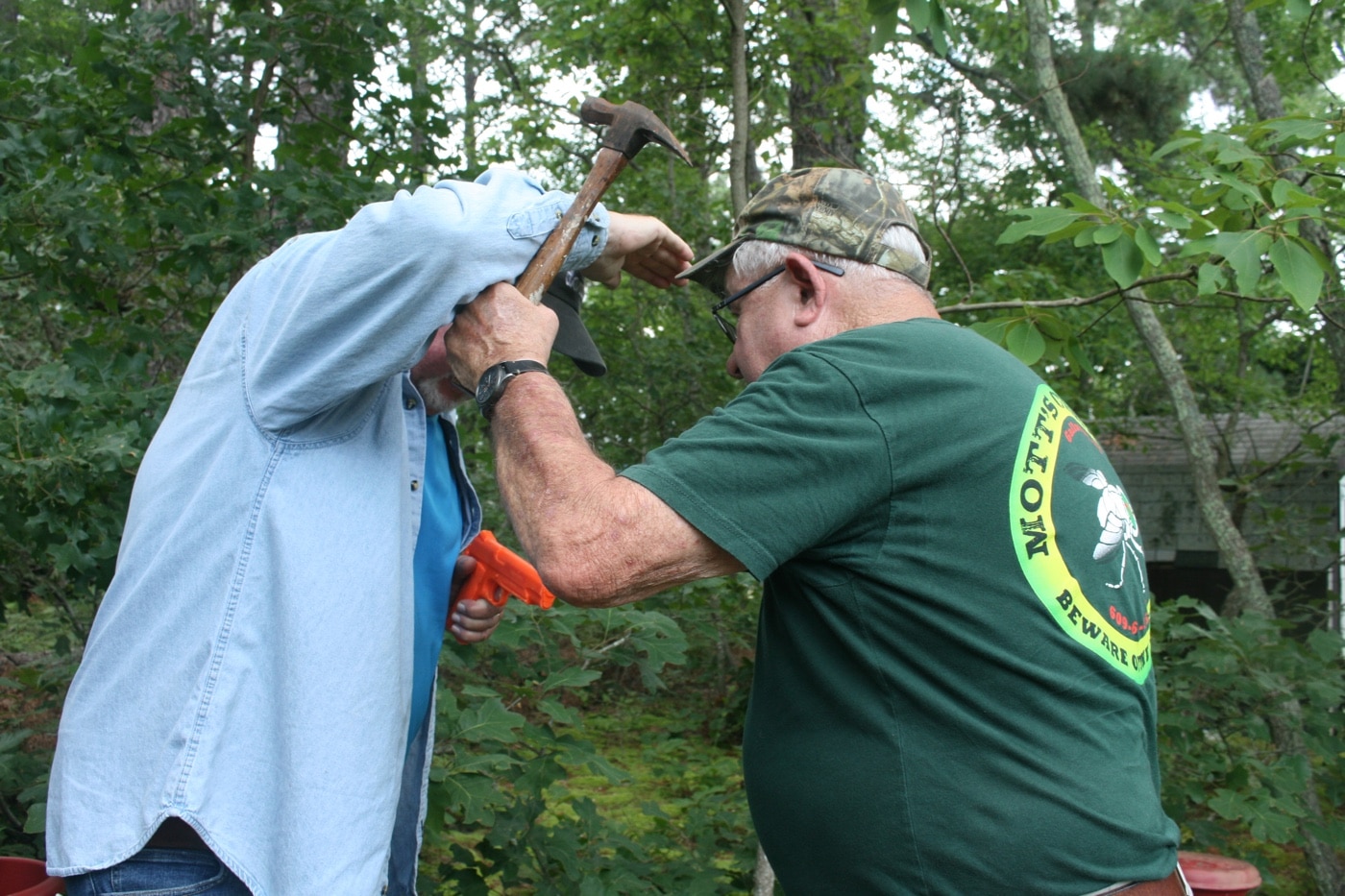
Everyone who takes up the pistol for personal defense needs to be familiar with a few effective empty-hand tactics. Inside of personal space, you may have to go to an empty hand technique before you can safely access your gun.
Stay switched on as best you can and remember a firearm response will not be justified in every violent assault. Ask yourself the big question: Are the elements of ability, opportunity and jeopardy present? If you don’t find yourself in at an immediate and otherwise unavoidable risk of death or serious bodily injury, using deadly force is not justified.
Armed citizens should avoid conflict whenever possible, but if you find yourself on death’s doorstep, the ability to effectively counter an extreme close quarter’s assault can get you through.
Editor’s Note: Please be sure to check out The Armory Life Forum, where you can comment about our daily articles, as well as just talk guns and gear. Click the “Go To Forum Thread” link below to jump in and discuss this article and much more!


